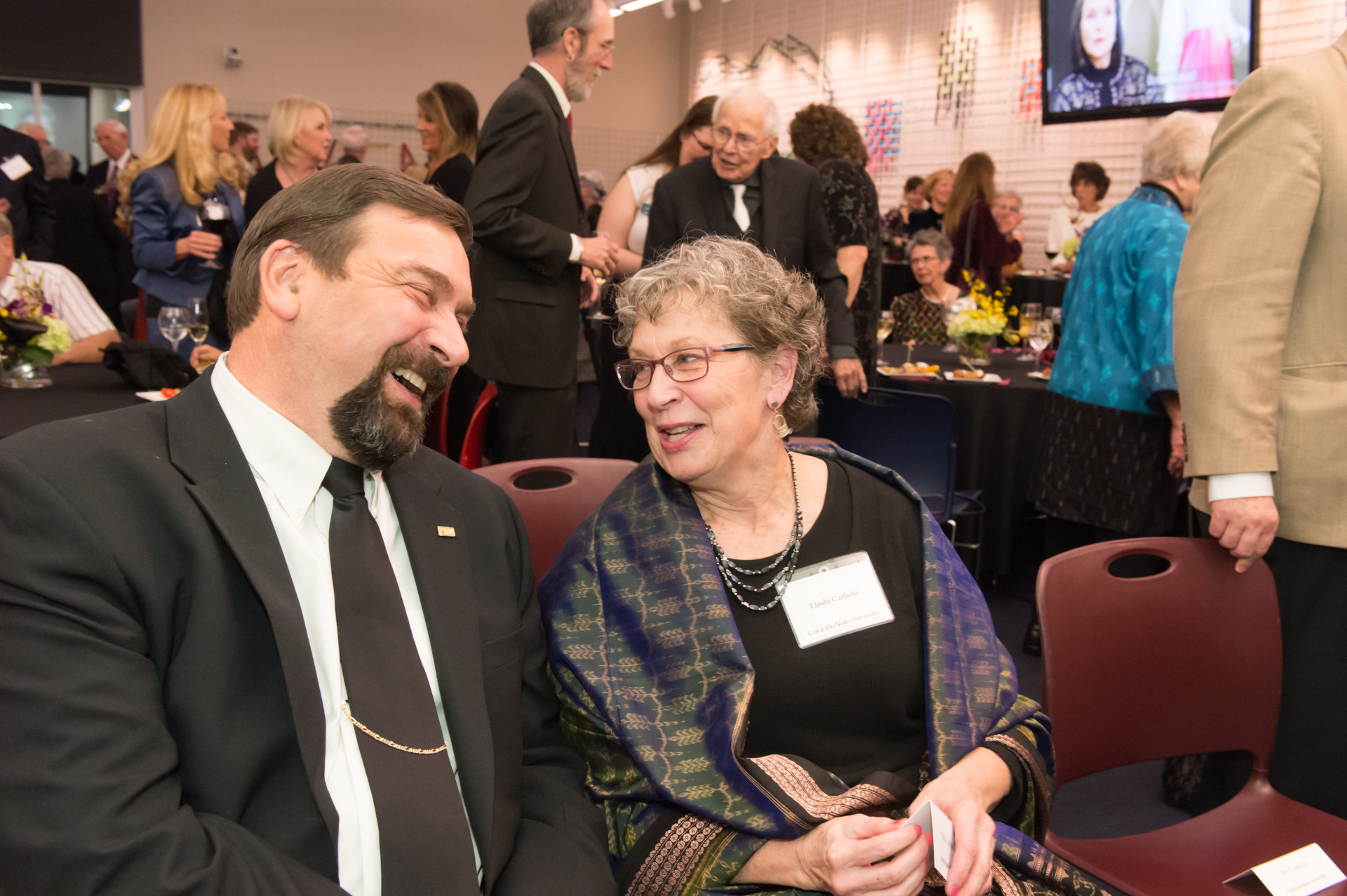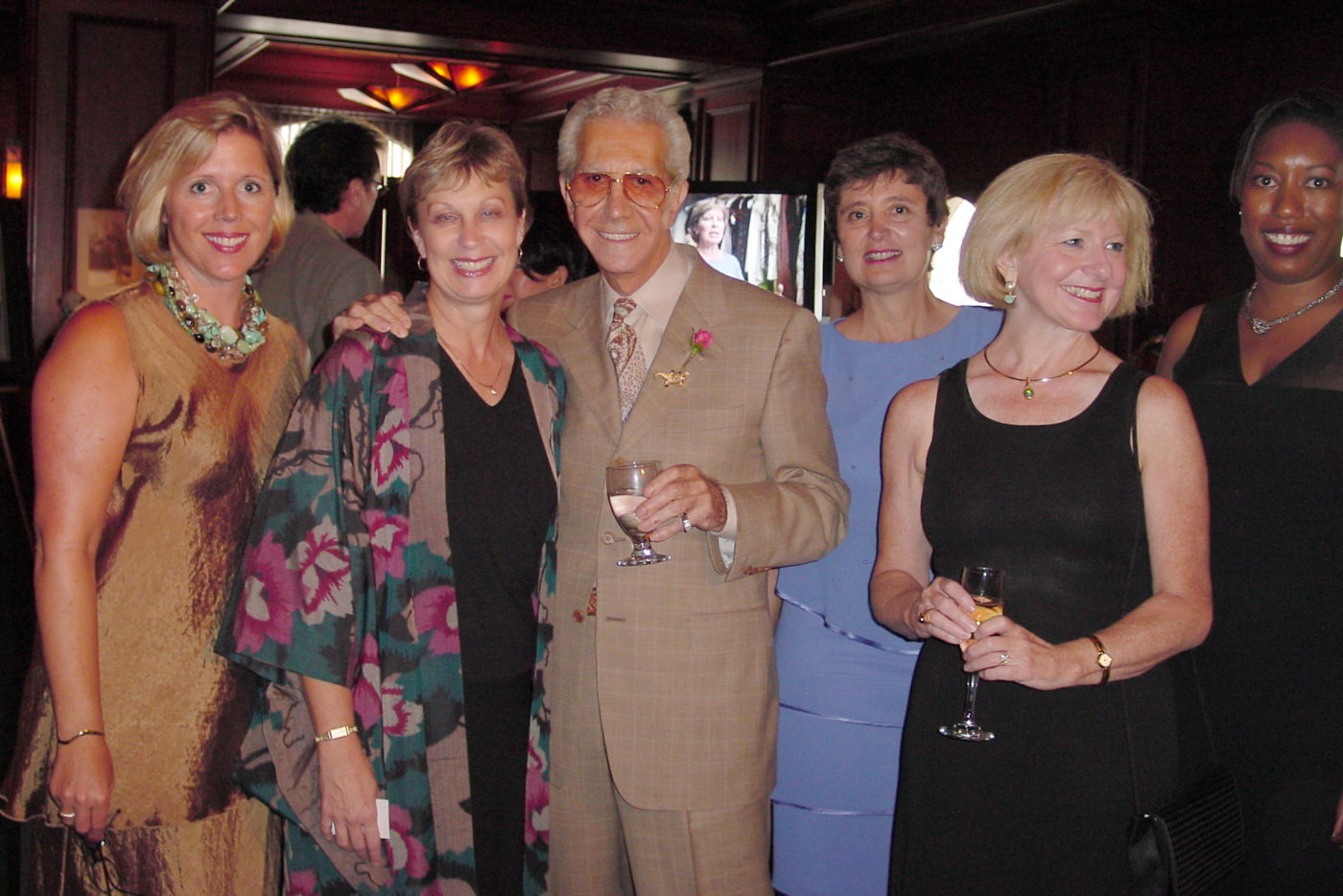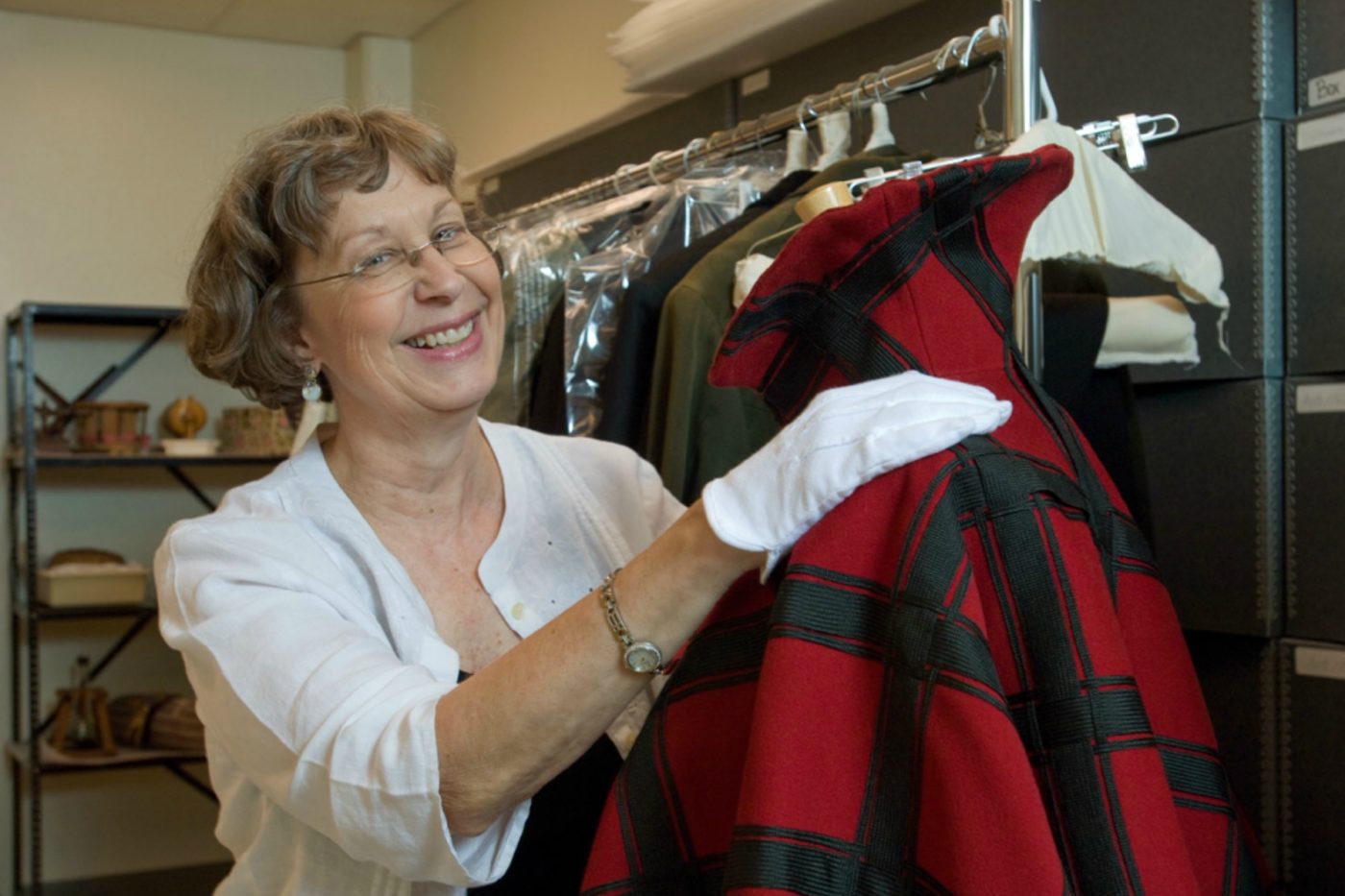The Texture of Generosity
The 2022 Spirit of Philanthropy Award recipient story by Bruce Hallmark published June 2, 2022Linda Carlson at an event celebrating faculty emeriti, retirees and donors held in the Avenir Museum in April 2022.
Her name sits atop the door to Room 157 just inside the main entrance to the Avenir Museum of Design and Merchandising. It was her classroom when she was a teacher in the Department of Design and Merchandising in Colorado State University’s College of Health and Human Sciences.
For Linda L. Carlson (M.S., ’88), curator emerita of the Avenir Museum, that token of appreciation was more than enough recognition for her 22-year career curating the department’s costume and textiles collection.
The department and the college, however, saw things differently. Last month, Carlson was chosen as the 2022 recipient of the Spirit of Philanthropy Award.
“It was amazing! I was absolutely flabbergasted,” said Carlson, who was attending a college event celebrating faculty emeriti, retirees, and donors when the announcement of the award was made.
The award is given annually by the Division of University Advancement to a current, emeritus, or retired faculty or staff member who has demonstrated exceptional leadership and a sustained commitment to increasing public understanding of the mission and programs of the University and worked collaboratively with a development team on fundraising activities.
Carlson is quick to point out that her success was a team sport. “It was about a lot of people who shared my passion, who were supportive of what I was doing and believed in the mission of the Avenir Museum. I certainly had a love and passion for it, but I didn’t accomplish this by myself.”
Sewing success

Former President Tony Frank and Linda Carlson at the grand opening of the Avenir Museum in 2016.
“I grew up loving textiles,” Carlson said, “but I think my first love was history, especially Russian history, when I was in grade school. And I also always sewed and did handwork and embroidery.”
She earned a bachelor’s degree in consumer-related studies from The Pennsylvania State University in 1971 before moving to Denver, Colorado, where she met her husband, Jonathan Carlson, Ph.D., (B.S., ’68). The two came to Fort Collins after Jonathan accepted a faculty position at CSU and became a professor emeritus of microbiology. They had two children, Peter and Hannah.
“When I went to graduate school at CSU, I really wasn’t looking for a job. I had small children at home; graduate school was a way to get out of the house, and I had a wonderful time.” It also gave Carlson the opportunity to combine her love of textiles and history into a career she never anticipated.
While earning her master’s degree in textiles and clothing, Carlson worked with the costume collection and was hired right out of graduate school in 1988 as the curator for the costume and textiles collection. (The word “costume” implies apparel worn by theater performers or Halloween disguises, but it’s the industry term for clothing in all its forms.)
Becoming the Avenir

Linda Carlson (second from left) with Richard Blackwell at a CSU alumni and donor event in Los Angles in the late 1990s.
In the late 1980s, a chic dress shop in Denver, which carried and collected a line of clothing by renowned fashion designer Richard Blackwell, donated about 50 items to the costume and textiles collection. “Mr. Blackwell,” as he was known in the industry, learned of the donation and contacted Carlson. He visited campus shortly thereafter, which was the start of a relationship that lasted for years. He returned in 1996 to teach for a week, and in 2010, she curated and facilitated an exhibit titled, “Mr. Blackwell: A Retrospective,” in his honor.
“I adored Mr. Blackwell,” Carlson said. “I was able to visit him in Los Angeles, and I had calls from other designers who were getting ready to let go of things – including an archivist for Calvin Klein who sent us a collection from the 1990s – who had heard about us. It was just astounding.”
Throughout her career, Carlson enjoyed teaching courses related to textiles and the costume collection. “I always told my students at the beginning of costume history class that there are a lot of reasons clothes are important, but as Mark Twain said, ‘naked people have very little influence on society.’”
In 2008, Carlson oversaw the move of the costumes collection from the Gifford Building to the University Center for the Arts, where, through the generosity of donors, it became the Avenir Museum. The space provided more exposure for the collection to the community and scholars and was a major step in establishing its credibility as a serious museum.
In the years that followed, additional philanthropic gifts aligned with Carlson’s vision of expanding the Avenir Museum from a single gallery within the UCA to a separate building adjacent to the UCA. The new LEED-certified facility opened in 2016 with state-of-the-art collection storage and conservation laboratory, three galleries, the Linda L. Carlson Classroom, library, and management areas.
Carlson is also proud of the cross-campus collaborations the museum helped foster over the years with the departments of history and anthropology to have students work in the museum, study exhibition design, and learn how to properly care for and handle artifacts.
A living legacy

Linda Carlson with an artifact from the costume and textiles collection in the Gifford storage facility circa 2007.
Carlson retired in 2011 but has remained actively engaged with the museum and the Department of Design and Merchandising. The college named her a Legacies Honoree in 2015 and created a video and webpage celebrating her career at CSU. In 2018, a gift from Lucile E. Hawks, a longtime friend of Carlson’s, established the Linda L. Carlson Acquisitions for the Avenir Museum Endowment that supports acquiring and preserving items for the collection, which now includes more than 20,000 historic apparel and textiles artifacts.
Additionally, a transformational estate gift to the college by an anonymous donor will establish a University endowed chair position in honor of Carlson and her vital role in curating the collection and helping create the museum.
That kind of tangible recognition by friends and donors speaks volumes about Carlson’s dedication to her work and the professional manner in which she pursued it. “I think I had the best job on the whole campus because I loved it and it was fun.”